This blog is based on reflections by the UEA UNESCO Chair family literacy team (based on group WhatsApp conversations): Sushan Acharya, Sheila Aikman, Helene Binesse, Symon Chiziwa, Kamal Raj Devkota, Abiy Menkir Gizaw, Ulrike Hanemann, Catherine Jere, Tizita Lemma, Gina Lontoc, Yeraswork Megerssa, Ahmmardouh Mjaya, Chris Millora, Anna Robinson-Pant and Turuwark Zalalam Warkineh. This team are currently conducting research with the UKRI-funded Family Literacy, Indigenous Learning and Sustainable Development Global Research Transfer Award (GRTA) project. This project sets out to research indigenous family learning practices and current literacy policy in Ethiopia, Nepal, Malawi and the Philippines. The aim is then to work with government departments and NGOs in developing new policy and practice initiatives that build on indigenous and intergenerational family learning. See UEA website for further details.
How are poorer communities around the world finding out what COVID-19 is and what to do? From public demonstrations of hand-washing and loudspeaker vans giving out advice, to TeleMedicine education and Facebook chatrooms, we have been sharing reflections on how people are learning about and engaging with COVID-19 in our contrasting contexts of Nepal, Malawi, Ethiopia, the Philippines and the UK. Working together on a research project about family literacy and indigenous learning, we realised that our exploration into how people pass on knowledge and skills informally within families and communities – including mediating health messages – takes on a new significance in the current crisis.
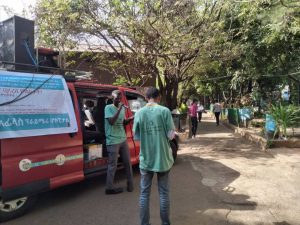
A van with loudspeakers transmitting COVID-19 information to public in Ethiopia. Source: Bahir Dar University
Comparing our different contexts, we found that the sources and means of communication differed greatly. In a township in Malawi, for example, a van goes around the community to play songs about COVID-19 and how one can minimise the risk of getting infected. This strategy is particularly popular in rural areas where access to information – especially online – is constrained. In stark contrast, were our observations in the Philippines, where Facebook use is so widespread. Families have online chat groups sharing Facebook posts, news, articles, tweets and photos about COVID-19 from a variety of sources – and at times, unverified. In Ethiopia, we found a combination of both – families learn about COVID through TV, radio, text messages and social media but also ‘offline’ through big speakers on vehicles that roam around markets and gathering places. In Nepal, Hindu practices around mourning for a dead relative, childbirth and menstruation already involve strict social distancing and hygiene practices – which makes us wonder whether and how current advice on how people can stay physically distant could be linked to and build on what people already know, believe and practise.
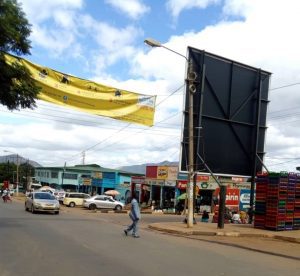
A yellow banner containing COVID-19 related information put up by a Muslim youth group in one of the streets of Zomba, Malawi. Credits: Ahmmardouh Mjaya.
In the other three countries too, we found that indigenous and religious practices play a variety of roles in how people respond to COVID-19. In some parts of Ethiopia, we witnessed how priests fumigate the streets with incense, and in other parts, individuals kneel in prayer with the hope of ‘combatting’ the spread of virus in urban areas. In a village in Malawi, a Muslim youth group put up large banners in the streets with information on the virus and the importance of washing hands. In the Philippines, Catholic masses – with specific prayer intentions towards healing and protection – are livestreamed via Facebook and watched by thousands of devotees. In certain rural areas in Nepal, the Katuwal (village messenger) shouts from the top of the hills to deliver information about COVID-19. The Katuwal is well-respected in many communities – especially among Indigenous peoples – in sharing ‘life-saving’ information.
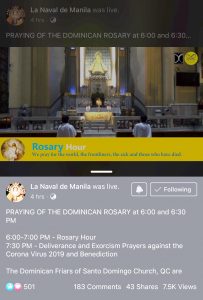
Rosary Hour in a Catholic church in Manila, Philippines livestreamed via Facebook and viewed by around 7,500 people. Screenshot by: Gina Lontoc.
While approaches to sharing COVID-19 related information varied across the contexts we work, we found that, in some ways, the challenges seemed quite similar and raised the question: do religious and cultural practices have to be seen only as a problem or a barrier to change? Whether this is about handshake greetings (Malawi), Hindu funeral rites involving social isolation (Nepal), eating a mixture of herbs (Ethiopia) or live online prayer to secure God’s protection (Philippines), the tensions between indigenous practices and formal health advice have never been so apparent.
The COVID-19 pandemic has highlighted an urgent need for people to engage actively and critically with
the latest health education information and the news more generally. Now confined to our homes, we realise how much we rely on family members and our immediate communities to discuss together and begin to understand the complexity of COVID-19. Within the countries where we are working, Government and NGO health educators have long relied on a top-down didactic approach to ‘preaching’ about the benefits of improved hygiene, nutrition and sanitation to poorer communities. Yet there remains the challenge of ‘translating’ this information into meaningful learning for families and communities that takes account of their everyday lives. Now faced with the current crisis, we have found that a greater diversity of people and organisations are taking on the role of educators within their communities – both online and face-to-face, whether through posters, social media discussions or handwritten notices.
As researchers, we are looking closely at what is happening on the ground and the role that critical health literacy – learning to distinguish fact from fiction – could play in the current crisis. There is now a real urgency to develop new approaches to family literacy and learning that can contribute to raising critical awareness and community action.

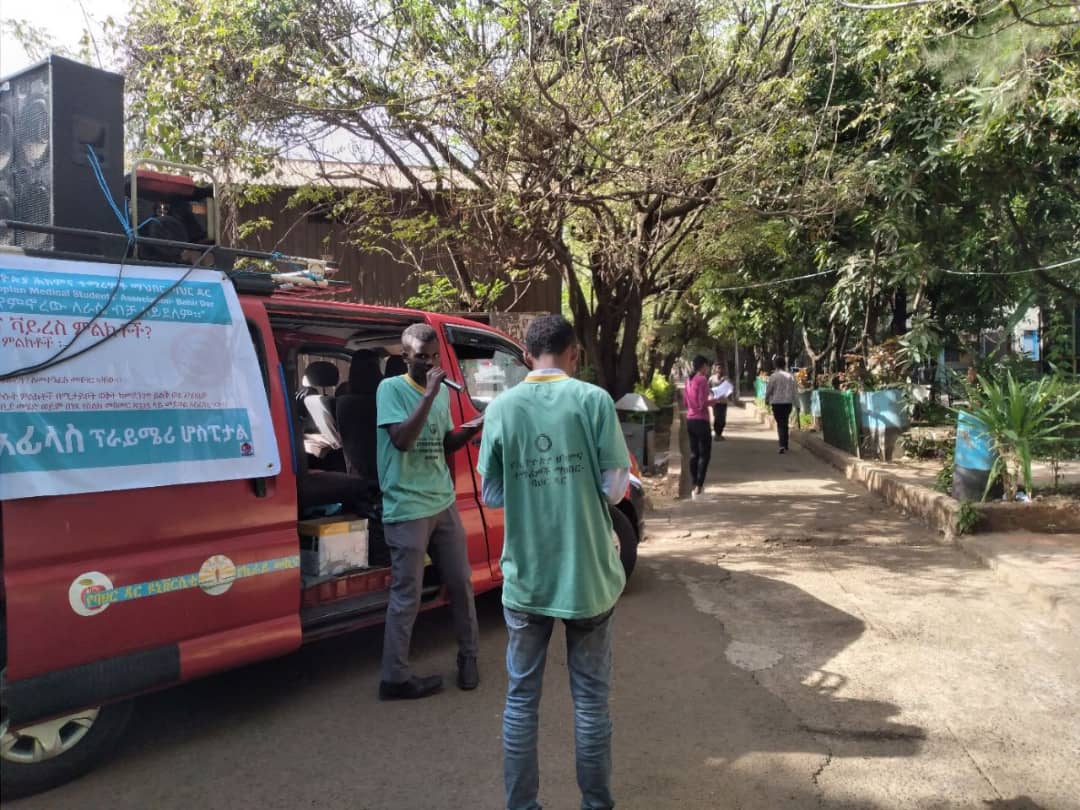
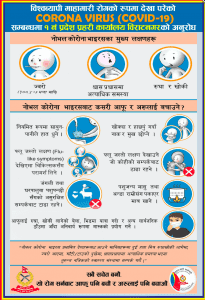
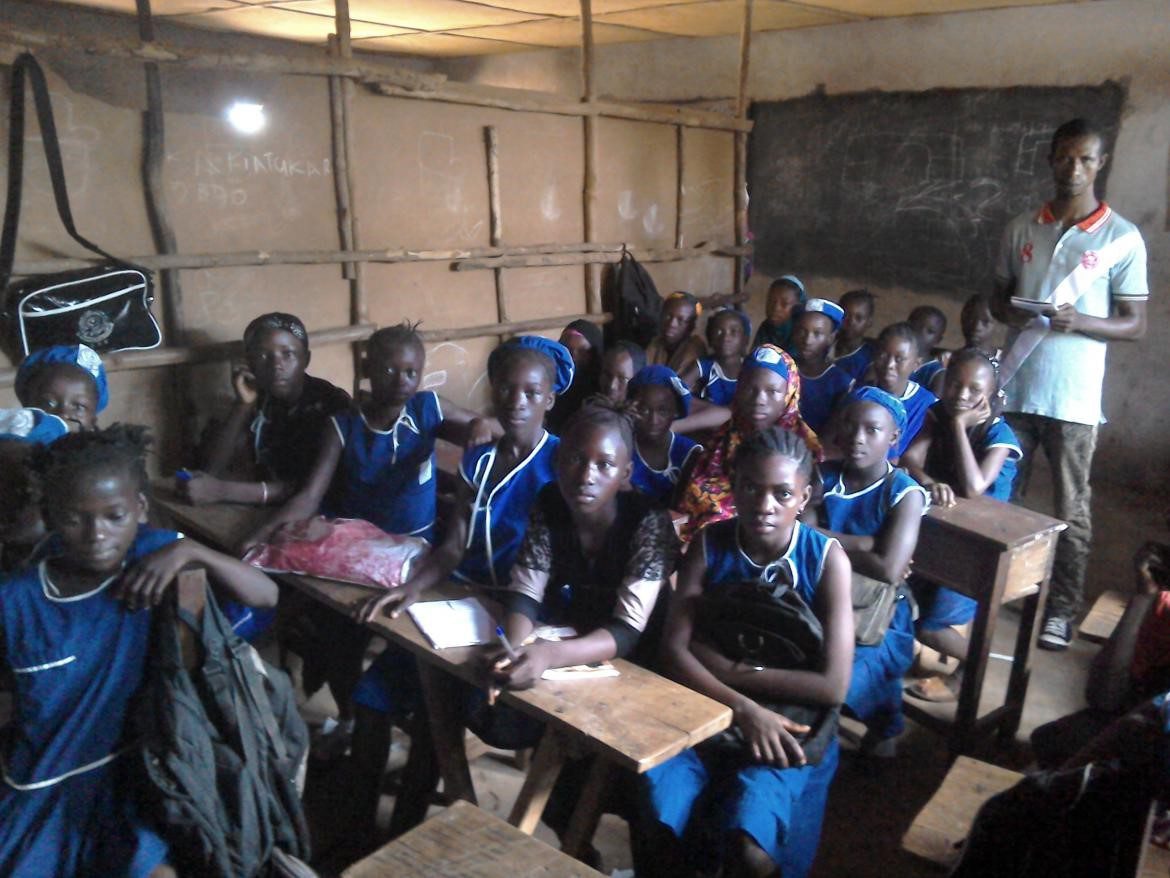
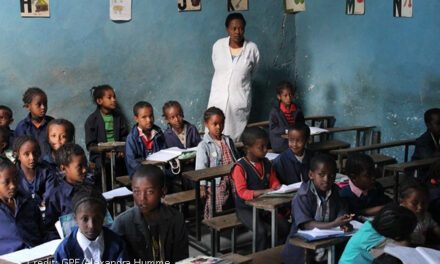
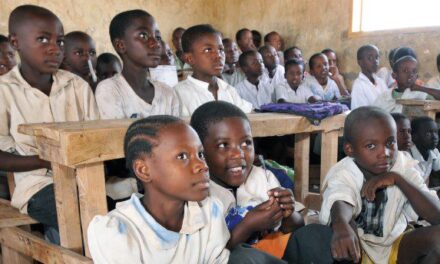

This is very timely, as many other agencies are adopting a top-down/systems approach to sharing information. CHILD to CHILD has, for 40 years, built on family structures for learning, and the importance of siblings for spreading information (originally health information) to others in families and community. But it goes beyond that, looking at children’s agency also.
We are currently developing a resource (linked to many other good resources) for children’s agency within a COVID response. In addition we are gathering up over 40 years of CHILD to CHILD approaches and their impact.
We are very interested in outputs such as yours to inform our work
Thanks Susan, yes there are exciting potential connections with child-to-child re agency, voice and informal learning. I remember this approach from the 80s when I first started working in Nepal in nonformal education. Would be interested to hear if you are looking at indigenous learning and health knowledge within Child to Child as part of a more bottom-up approach to health education? Look forward to hearing more!
Thanks for your insight, Susan and great to hear about your exciting project which has parallels to some of the policy/programme-focused questions we are exploring through our research. If you’d like to know more about our family literacy project, please see: https://www.uea.ac.uk/research/about-uea-research/oda-research/grta/family-literacy. Please feel free to contact us too either via Twitter @UNESCOChair_UEA or email: unesco.chair@uea.ac.uk.